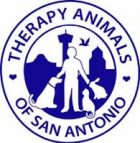Therapy Team work requires emotional, intellectual, and physical capability. Since therapy teams work in a variety of settings, and often with vulnerable people, many unanticipated things can happen and much is not under their direct control Thus, the human team member must have knowledge about, and the ability to proactively assess, the environment; and, anticipate issues for and with persons they might encounter. They also must demonstrate an understanding of how their pet partner responds to many different stimuli and exhibits stress. The animal team member must be able to respond consistently to the cues and directions their human team member gives them in addition to having an even temperament and solid training. We therefore believe it is important for individuals considering working as therapy teams to have a realistic view of what will be expected of them and their animals.
We are dedicated to commodious, safe, and therapeutic community service, as well as, the harmonious stewardship of our organization. We believe diversity of ideas and respectful creative conflict are strengths when all focus on a common goal: bringing people and animals together for healing. To most efficaciously realize these ideal we reserve the right to decline initial membership or to refund membership fees and withdraw membership if, with serious consideration, we believe an individual will or does not align well with our organization.
Our Therapy Team evaluation criteria are set to meet or exceed nationally accepted standards for animal assisted activity and animal assisted therapy. They are designed to maximize the safety and comfort of the community we serve, ourselves, our animals, and the general acceptance of the work we do. The capacity to execute the observations, actions, and interactions consistent with national standards and current TASA criteria while performing therapy animal work as a member of Therapy Animals of San Antonio is paramount and not subject to limited or partial attainment. We also recognize that as an all-volunteer organization with limited resources there are equivalent limits to our capacity to provide accommodations and still maintain our accountability to the public we serve. Our work is focused on the needs and benefits of our clients and facilities and not designed or intended to primarily provide benefit to or meet therapeutic needs of the therapy team. To provide clarity we have identified core performance standards that will allow you to assess your qualifications for doing this work.
We consider a qualified TASA Therapy Team individual one who, with or without minimal accommodation or modification, meets the standards identified in the TASA Team Evaluation. Both public and legal expectations include the ability to demonstrate consistent emotional, environmental, and animal awareness and pro-active control or rapid response. This is not transferable to a non-animal handling person and is not negotiable.
Therapy Animals of San Antonio
Core Performance Standards
Essential eligibility requirements for participation as a TASA Therapy Team
Animal assisted activities and animal assisted therapy requires cognitive, sensory, affective, and psychomotor performance requirements. The following Core Performance Standards identify essential eligibility requirements for participation.
| Performance Area | Standard | Examples of Necessary Activities (not all-inclusive) |
| Critical Thinking | Critical thinking ability sufficient for prediction and judgment of pending and current situation; | Identify cause-effect relationships in people-animal interactions and define safe parameters – can anticipate contextual events and acts in the moment as an advocate for the animal partner, client and facility |
| Interpersonal | Interpersonal abilities sufficient to interact with individuals, families, and groups from a variety of social, emotional, cultural, and intellectual backgrounds in such a manner as to ensure the comfort of and focus on client and client / facilities needs | Establish rapport for self and animal with clients, health workers, educators and colleagues Consistence and congruence in words and actions designed to meet individualized client / facility needs and priorities |
| Communication | Communication abilities sufficient for interaction with others in verbal form as well as socially and contextually appropriate facial expressions and other body language Discipline sufficient to engage so as to support the efficiency of the organizations business | Explain human-animal interaction processes and procedures, including desire to interact and boundaries of interactions Routine demonstration of scheduling communication and follow through; timely responses to phone calls and emails |
| Mobility | Physical abilities sufficient to move from room to room and maneuver safely in small spaces with animal | Move around with animal in patient rooms, classrooms, clinics and treatment areas, move a chair or table to allow client access to animal |
| Motor skills | Gross and fine motor abilities sufficient to provide safe and effective animal handling and direct interactions in various environments | Manipulate animal equipment, give training cues, direct animals activities for rehabilitation and interactions |
| Hearing | Auditory ability sufficient to assess environment and animal | Hears client requests, animal vocalizations and breathing changes; alarms and directions from healthcare workers, educators |
| Visual | Visual ability sufficient for safe mobility and guidance of interactions with animal and for environmental assessment necessary in health care and education environments | Sees client reactions to animal, assess animals visual cues, sees pathway hazards, equipment to avoid in rooms, can find way in various environments |


